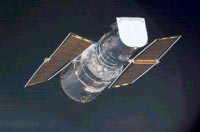This topic covers issues related to energy generation, conversion, transportation and consumption and how the industry is addressing the challenge of energy efficiency in general.
innovations-report provides in-depth and informative reports and articles on subjects ranging from wind energy, fuel cell technology, solar energy, geothermal energy, petroleum, gas, nuclear engineering, alternative energy and energy efficiency to fusion, hydrogen and superconductor technologies.

Siemens Automation and Drives (A&D) presents new electronic components in the Delta switches and socket outlets range for the retrofit market in the area of lighting and shutters. The new products include universal dimmer and shutter control inserts, conventional and wireless operator pushbuttons, and a battery-operated wall-mounted transmitter.
The “sys universal dimmer insert” is suitable for all types of lighting to 420 watts/volt-ampere connected load. The dimmer can be easily retrofitt

Photovoltaics is a science that examines light-electricity conversion. Conversion of solar energy carried by photons is transformed by solar cells into direct-current electrical energy. Interest in the use of photovoltaic (PV) solar technologies is growing rapidly, as it will permit the direct production of electricity from solar radiation without any harmful emissions or noise. Rising energy costs, the finite nature of fossil fuels and worries about climate change has renewed interest in making the

Researchers eager to use individual molecules as the components of ultra-small electronic circuits and computers have put a new spin on their ambitious goal.
They take advantage of a hitherto unexploited property of electric currents, called spin, to make molecular devices that operate under new rules. This fledgling form of electronics, called spintronics, could lead to computers that don’t forget anything when their

Two Basque companies, Enerlim and NECESA, have developed a new wind generator, a wind reservoir to make use of wind energy.
This wind reservoir is much lighter than ordinary three-arm wind generators; hence, it is more economical and easier to install. On the other side, the machine is completely modular, as columns, pulleys and plates can be divided in order to make easier the production, transport and installation. The largest piece to be transported and installed is 12 meters long and 2

The power for Hubble’s scientific discoveries comes from solar cells. Designing and constructing Hubble’s first two sets of solar cell arrays constituted a huge technological achievement for the European Space Agency and European industry. After an in-orbit life of more than 8 years, this example of pioneering space technology was this morning (European time) replaced by new, more powerful arrays.
For the last week a dedicated team of engineers, technicians and scientists from the European

European research co-ordinated by TU Delft
Offshore wind technology ready for application
The technology for the construction and operation of offshore windfarms is ready for large-scale application. Companies in the fields of engineering and services are preparing to take part. This can be seen in the conclusions of the project Concerted Action on Offshore Wind Energy in Europe (CA-OWEE) of the European Union, in which seventeen parties from thirteen European countries have brou